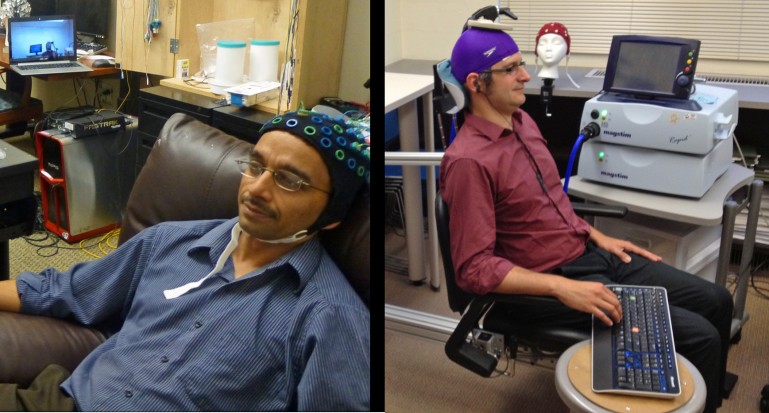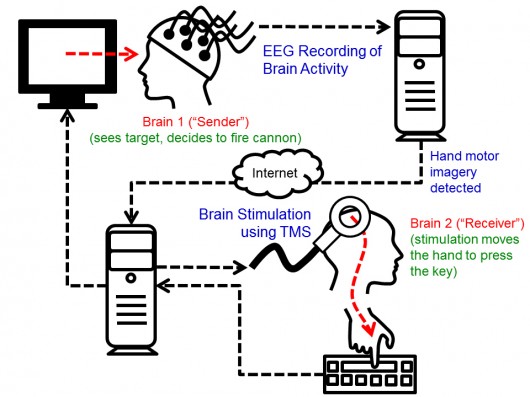The successful experience of the organization of the neurocomputer interface between people

Two employees of the University of Washington, specializing in computational neuroscience (computational neuroscience), published their results of the experiment, which they set themselves over and which until now only laboratory rats were exposed to.
Rajesh Rao and Andrea Stucco assembled a setup consisting of two special caps, the first of which with embedded electrodes connected to an electroencephalography (EEG) machine, is able to communicate via a Skype connection with the second cap, connected to a transcranial magnetic stimulation (TMS) machine . TMS is capable of generating magnetic fields through a special core, mounted on the subject's head (non-invasive technology), to influence his brain.
In this case, the experiment was constructed as follows: Rao, at one end of the university campus, put on a cap connected to an encephalograph, while his colleague, Staco, physically at a considerable distance, put on a cap with a TMS core, aimed at part of the cerebral cortex, responsible for the movement (left motor cortex).
')
Rao, sitting in his chair, "played" in a simple computer game, which consisted in that it was necessary to press the spacebar on the keyboard in order to launch a rocket and hit some game target. The word "played" is quoted because Rao imagined (or visualized) that he actually presses a key with his finger. This volitional force was recorded by an encephalograph and through a Skype connection was sent to the TMS, to which Staco was connected and whose finger was inserted over the space. At the same time, he himself was sitting with his back to the same game and in noise insulation headphones, so that Rao “played” for him.
The scheme of work looked like this:

And, surprisingly, in response to TMS stimulation, his finger moved, and in fact a push was made, which was initiated by the brain of another person. Stakko himself describes the physical sensation at the moment of TMS impulse transmission as a nervous tic.
Research scientists funded by many organizations (including the US Army) and their final meaning is described by the creators themselves like this - the ability to transfer skills at a distance. A typical case is a plane in distress, in which the main pilot is killed by terrorists, and in the second - a heart attack: then any passenger of the airliner can enter the cockpit, put on a special helmet and, using brain stunt teams on the ground, land the plane without actually having the necessary skills .
Take a look at the video of the experiment below:
[ Source ]
Source: https://habr.com/ru/post/191790/
All Articles